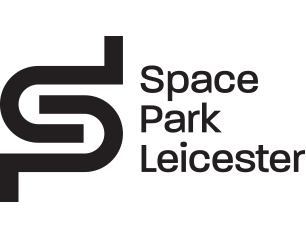NASA science head tours Space Park Leicester, says ‘inspiring the hearts and minds of the next generation of STEM students is paramount’

NASA’s head of science toured Space Park Leicester to see its wide-ranging work and its efforts to inspire the next generation of scientists and engineers.
Dr Nicola Fox, Associate Administrator for NASA’s Science Mission Directorate, toured the University of Leicester’s pioneering £100 million science and innovation park this week, where she saw some of the cutting-edge facilities that are enabling a range of projects and missions across the Leicester space portfolio.
Senior representatives from Space Park Leicester and the Institute for Space at the University of Leicester led a tour that showcased the breadth of work conducted there and the sector-leading approach to industry collaboration. Taking in the state-of-the-art engineering and manufacturing facilities at Space Park Leicester, Dr Fox was briefed on current projects at Leicester spanning earth observation, planetary science, astrophysics, space instrumentation and technology. Researchers also presented on Leicester’s contributions to exciting missions such as the ESA-JAXA BepiColombo mission to Mercury and the joint NASA-ESA Mars Sample Return programme.
The University of Leicester has been involved with NASA missions for several decades, most recently providing the Mechanical Engineering Lead for the Mid-Infrared Instrument (MIRI) on the James Webb Space Telescope (JWST). The University of Leicester is also home to the only formal UK science lead for NASA’s Juno mission to Jupiter and hosts the UK Swift Science Data Centre for the NASA-led Neil Gehrels Swift Observatory.
Inspiring the next generation
“Inspiring the hearts and minds of the next generation of STEM students across the world is paramount for the future,” said Nicola Fox, associate administrator of NASA’s Science Mission Directorate at NASA Headquarters in Washington. “It was truly inspiring to speak with future space scientists and engineers at the University of Leicester and learn about their work in space medicine, which is the idea of targeting medicine to help astronauts as they go on space journeys, and see the Double Walled Isolator, which could be a unique capability for enabling planetary sample research. The power of education at research institutions like the University of Leicester produce the ideas today that will lead to breakthroughs in space exploration, scientific discovery and innovation tomorrow.
“There is space for everyone in humanity’s exploration of our universe and beyond, and it was wonderful to see that the students at Space Park were not only focused on science and engineering, but also in exploring other interests like law, business and design,” said Dr Fox. “Science is for everyone, and that whole-of-self approach is valuable for putting a mission into space.”
Dr Fox directs more than 100 NASA missions to explore the secrets of the universe – missions that use the view from space to assess questions as practical as hurricane formation, as enticing as the prospect of lunar resources, as amazing as behaviour in weightlessness, and as profound as the origin of the universe. She is responsible for fostering an inclusive, welcoming atmosphere and supporting a diverse team of space scientists and engineers around the United States of America.



As the Associate Administrator, Dr Fox creates a balanced portfolio of carefully chosen missions and research goals to enable a deep scientific understanding of Earth, other planets, the Sun, and the universe. These efforts lay the intellectual foundation for the robotic and human expeditions of the future, while meeting today’s needs for scientific information to address national concerns.
Dr Fox’s visit comes at a time of strengthening links between Space Park Leicester and NASA, with recent talks by astronaut Dr Stanley G Love and Astrophysics Division Director Dr Mark Clampin hosted at the space hub. Members of the Space Park Leicester team have recently visited NASA’s Glenn Research Center, while collaboration with NASA and the Universities Space Research Association (USRA) was strengthened in a visit to the United States by Professor Nishan Canagarajah, President and Vice-Chancellor of the University of Leicester, and Executive Director of Space Park Leicester Professor Richard Ambrosi last year.
Professor Nigel Bannister, Director of Skills and Training Development said: “Today’s visit was an important chance for our scientists and engineers, including some of our talented early-career researchers, to present their work to Dr Fox. The common interests and important connections identified today promise to be significant for our space-related technology development and flight projects, including an increasing number of exciting UK-US bilateral opportunities with NASA and other partners in the US.”
Professor Emma Bunce, Director of the Institute for Space said: “We were delighted to have a chance to discuss our wide-ranging international space activities with Dr Nicky Fox this afternoon. We have been involved in many NASA projects over the years, and are actively engaged in strengthening our connections across a range of future mission opportunities. I was particularly pleased to highlight existing and emerging interdisciplinary activity via our new Institute for Space – such as astropolitics, space law, and at the health-space interface – noting that the rapidly evolving global space sector requires a future talent pipeline across an ever-broadening range of skills.”
- Find out more about the University of Leicester


